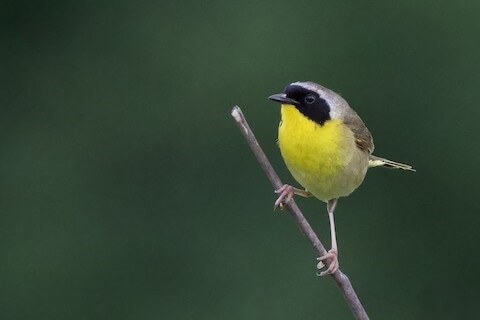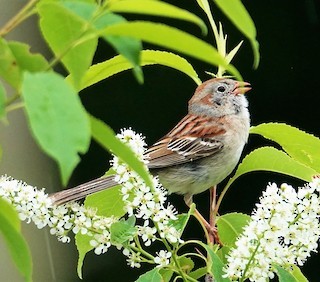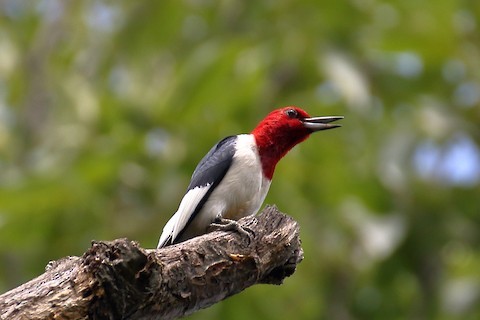Get the 2025 Gettysburg Getaway Guide
Check out our Getaway Guide online or have us send you one. Have an immediate question? Call us at 1.800.337.5015
Get the Guideby: Tina Klym-Snyder
The cannons have been mostly silent for the past 160-plus years – with the exception of Gettysburg National Military Park’s Living History demonstrations every season – but that doesn’t mean the fields and forests of the battlefield stay silent. Guests who venture into the park, regardless of the season, have the opportunity to experience the battlefield in an entirely new way: with the eyes and ears of a birder.
With its varied terrain of open fields, productive orchards, rocky hillsides, and canopied forests, Gettysburg National Military Park finds itself home to a multitude of birds, bugs, critters, and wildflowers … all necessary components of a thriving natural environment. From winter’s quiet to summer’s bustle, birds of many species can be seen and heard in all corners of the battlefield throughout the year.
From sparrows and swallows to warblers and raptors, let’s look at a few of our avian battlefield friends and where and when you are likely to encounter some of them.
Warbler migrations remain the highlight of many birders’ excursions. Warblers, named for their melodic songs and calls, follow migratory flightpaths from Mexico and Central and South America to Canada and points further north, making the journey back and again every year. Gettysburg and Adams County lie between two prominent flyways and often see any number of species interlude here in Spring and Autumn before continuing their journeys north or south.

Common Yellowthroat
Credit: Steve Bielamowicz
In Spring, you can glimpse warblers popping through the fresh growth of leaves and needles, looking for a meal of insects or nectar in the sweet blossoms of the trees. Small and highly active, the most common warblers to visit the park fly with a lilting bob from tree to tree, often singing skillfully where they settle: Yellow Warblers enjoy the exposure of the treetops while Common Yellowthroats often perch in the lower and middle branches of full, bushy shrubs. Both species are a curious breed and will often linger long enough to spy on you and be spied upon.
Whether you hoof the horse trail to the Spangler House or meander the park roads that lead to Culp’s Hill, you might see these and other commonly found warblers in stands of chestnut oak, sycamore, maple, and honeysuckle. Be watchful and tune in to the sounds around you, both in the woods and at the woods edge, to see and hear Chestnut Sided Warblers, American Redstarts, Northern Parulas, and more.
As the days grow hotter and dryer, the warblers move on; but in the open, grassy fields demarcated by sun-basking rock walls and weathered timber fences, new songs ring out. Any number of sparrows, swallows, larks, and wrens can be found flitting from grass to fence and back again.

Field Sparrow
Credit: Brian Lineaweaver
A variety of sparrows calls almost every area of the battlefield theirs. But one sparrow makes his presence known above all the others: the Field Sparrow, with its distinctive accelerating call that seems to echo as it rises. Field Sparrows can be heard from Little Round Top to Bliss Farm, all along Confederate Avenue and across Cavalry Field, from the early promise of an unnaturally warm spring day through the thick heat of the late summer sun. When most of the other birds have gone quiet, noisy sparrows that frequent the battlefield include Song Sparrows, Chipping Sparrows, Grasshopper Sparrows, and, in the right location, Swamp Sparrows.
Field Sparrows are not alone, however, in proudly and loudly announcing their presence to visitors on the battlefield. Easten Meadowlarks, with their showy yellow necks and chests and solid black breastbands, perch confidently on fence posts and call out with their unmistakable high, clear whistles. Look for them to light on conspicuous perches in the fields along Emmittsburg Road.
The late summer doldrums, when many birds go quiet because they are no longer seeking a mate nor protecting their young, give way again to migration; this time, however, water birds become the focus as divers, dabblers, grebes, and sandpipers move into the county’s ponds, lakes, streams, and shores.
Along the muddy bank found on Plum Run below Little Round Top, Least and Solitary Sandpipers forage in the shallowest edges of the creek. Killdeer, Green and Great Blue Herons, Mallards, and Wood Ducks populate the area and when inclement weather passes through the flyways, unexpected guests like Sora, Lesser Yellowlegs, and Virginia Rail can be forced off-course and downed by high winds.

Red Headed Woodpecker
Credit: John Manger
Of course, some feathered friends remain with us through the entire year. Black Vultures and Turkey Vultures continue to scavenge the farms and the fields; Carolina and Black-Capped Chickadees greet us with their cheerful calls; Carolina and House Wrens belt out their lengthy melodies; Northern Cardinals grace us with their bold and beautiful bearing; and a variety of woodpeckers find sustenance in the nut-bearing trees along West Confederate Avenue. Red Headed Woodpeckers commingle with Downy, Hairy, Red Bellied, and Pileated Woodpeckers as well as with White-Breasted Nuthatches, Tufted Titmice, and Gray Catbirds.
Whether you are an amateur birder, a skilled birder, or a non-birder, the fields, farms, and forests of the Gettysburg National Military Park are home to a multitude of bird species. Some are easier to spot than others; some are more melodic than others; and some are more common than others. But, if you’re looking for a new way to experience the battlefield, grab a pair of binoculars and a handy identification guide and see what feathered friends you can meet here.

Check out our Getaway Guide online or have us send you one. Have an immediate question? Call us at 1.800.337.5015
Get the GuideDon’t miss a thing that’s going on in Gettysburg; sign up to receive our fun and informative travel planning newsletter.
Let's Go